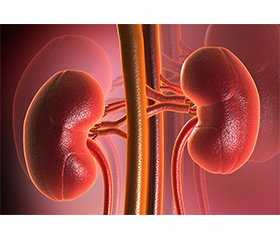Журнал «Почки» Том 14, №1, 2025
Вернуться к номеру
Результати лікування пацієнтів із повторним перитонітом при перитонеальному діалізі: звіт про 3 випадки
Авторы: Hmaidouch Nabil, Tahri Yassir, Yacoubi Qods, Ouzeddoun Naima, Benamar Loubna
Ibn Sina University Hospital Center, Department of Nephrology Dialysis Kidney Transplantation, Rabat, Morocco
Mohammed V University of Rabat, Faculty of Medicine and Pharmacy of Rabat, Morocco
Рубрики: Нефрология
Разделы: Справочник специалиста
Версия для печати
Перитоніт є однім із найбільш поширених та серйозних ускладнень перитонеального діалізу (ПД), що значно впливає на виживання перитонеальної мембрани та, відповідно, загальний успіх діалізу. Повторний перитоніт, визначений як виникнення іншого епізоду перитоніту через більше ніж чотири тижні після завершення лікування попереднього епізоду, часто потребує видалення катетера. Найбільш поширеними патогенами є шкірні бактерії, як-от Staphylococcus aureus та коагулазонегативні стафілококи, хоча інші бактерії, наприклад Escherichia coli (E.coli) та Serratia marcescens (SM), також становлять значну загрозу, особливо при рецидивах і поганому прогнозі. Повідомлено про три випадки повторного перитоніту, спричиненого різними патогенами, що в кінцевому підсумку призвело до видалення ПД-катетера. Перший випадок стався в 45-річної жінки з повторними інфекціями E.coli та SM, у якій, незважаючи на антибіотикотерапію, перитоніт рецидивував, що призвело до видалення катетера. Другий випадок стосувався 17-річної пацієнтки з повторною інфекцією SM; лікування включало видалення катетера та успішну його заміну. Останній випадок описує 74-річного чоловіка з численними епізодами перитоніту, спричиненими різними видами Staphylococcus, що призвело до тяжких ускладнень, зокрема кандидозної суперінфекції, і потребувало як видалення катетера, так і переходу на гемодіаліз. Ці випадки підкреслюють труднощі в лікуванні повторного перитоніту й важливість своєчасного видалення катетера для запобігання подальшим ускладненням і поліпшення результатів для пацієнтів. Крім того, вони акцентують необхідність комплексного моніторингу та належної антибактеріальної терапії для запобігання рецидивам перитоніту в пацієнтів, які проходять ПД.
Peritonitis is one of the most common and serious complications of peritoneal dialysis (PD), significantly impacting the survival of the peritoneal membrane and, consequently, the overall success of dialysis. Repeat peritonitis, defined as the occurrence of another episode of peritonitis more than four weeks after the completion of treatment for a prior episode, often requires catheter removal. The most frequent pathogens involved are skin-related, such as Staphylococcus aureus and coagulase-negative Staphylococcus, though other bacteria like Escherichia coli (E.coli) and Serratia marcescens (SM) also pose significant risks, especially with recurrence and poor prognosis. We report three cases of repeat peritonitis due to different pathogens, which ultimately led to the removal of the PD catheter. The first case involved a 45-year-old female with repeat E.coli and SM infections. Despite antibiotic treatment, her peritonitis recurred, leading to catheter removal. The second case featured a 17-year-old female with repeat SM infection, where treatment included catheter removal and successful replacement. The last one described a 74-year-old male with multiple episodes of peritonitis caused by Staphylococcus species, culminating in severe complications, including Candida superinfection, requiring both catheter removal and transition to hemodialysis. These cases highlight the challenges in managing repeat peritonitis and emphasize the importance of timely catheter removal in preventing further complications and improving patient outcomes. Moreover, they underline the need for comprehensive monitoring and appropriate antimicrobial therapy in preventing recurrent peritonitis in PD patients.
повторний перитоніт; перитонеальний діаліз; видалення катетера; гемодіаліз
repeat peritonitis; peritoneal dialysis; catheter removal; hemodialysis

